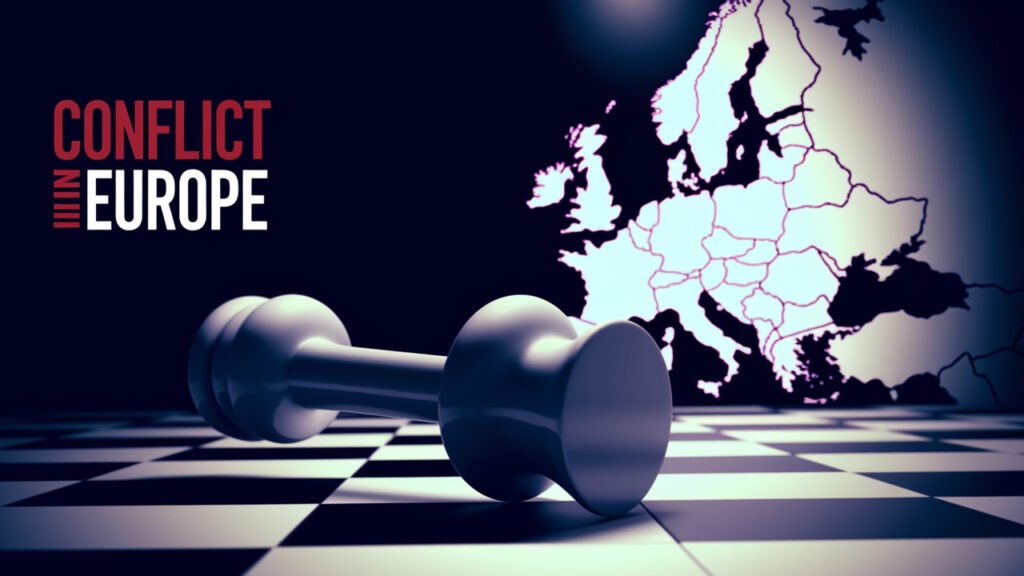Europe Prepares for Conflict — But Are Its People Paying Attention?
Europe on Alert: Preparing Civilians for the Unthinkable
Across Europe, governments are taking unprecedented steps to prepare their citizens for the growing possibility of war, as fears rise over an increasingly aggressive Russia and doubts loom over the United States’ long-term commitment to NATO defense.
From survival guides to nationwide evacuation drills, the continent is quietly but urgently gearing up for scenarios that would have once seemed unthinkable in modern times. Authorities are pushing for a major cultural shift—urging citizens to adopt a “wartime mindset” and be ready for any crisis, including the potential of armed conflict.
As NATO Secretary-General Mark Rutte bluntly put it during a security conference in Brussels last December, “It is time to shift to a wartime mindset.”
This growing urgency stems largely from concerns about Russian President Vladimir Putin, whose ongoing war in Ukraine has sparked fears that he might not stop there. As the U.S. shows signs of stepping back from its traditional role as Europe’s security guarantor, many European leaders are worried that, in the event of an attack, they may be left to fend for themselves.

A New Kind of Preparedness
In March, the European Commission issued guidance calling for all EU citizens to maintain a stockpile of essentials—enough food, water, and basic supplies to last at least 72 hours. The move is part of a broader campaign to instill a “culture of resilience” across the continent.
Many countries have also issued their own national instructions. Germany recently updated its civil defense strategies, detailing how everyday life would need to change in the event of war. Sweden has distributed millions of copies of an updated survival pamphlet titled “If Crisis or War Comes,” offering advice ranging from where to seek shelter during an air raid to how to speak with children about war and trauma.
The Swedish guide includes practical steps: seek shelter in cellars, garages, or subway stations during air raids; turn off ventilation systems; and tune in to public radio for updates. Even nuclear threats are addressed, with instructions to take shelter in bunkers and stay put for several days as radiation levels drop.

Finland: A Model of Readiness
For Finland, the threat isn’t hypothetical. Sharing the longest border with Russia of any NATO member—over 1,300 kilometers—Finns have long viewed preparedness as a necessity, not a choice.
Since the 1950s, bomb shelters have been mandatory in all new apartment buildings. After Russia’s full-scale invasion of Ukraine in 2022, Finland audited its shelter infrastructure and confirmed it has space for 4.8 million people in a country of 5.6 million.
New guidance from Finland’s interior ministry now covers everything from preparing for long-term power and water outages to dealing with cyberattacks and military strikes. It’s a sobering blueprint—but for many Finns, it’s simply common sense.

Will the Public Take It Seriously?
While these efforts reflect a clear shift in official thinking, the real question is whether civilians will respond with the same level of seriousness.
Claudia Major, a security expert with the German Marshall Fund, says the need to prepare for both military threats and so-called “grey zone” aggression—cyberattacks, disinformation, sabotage—is more critical than ever. But she also warns that governments must strike a delicate balance: encouraging preparedness without stoking panic.
“There’s a fine line between awareness and alarmism,” she explains. “We want people to be ready, but not terrified.”
For countries like Finland and the Baltic states, which have a history of direct conflict with Russia, the threat feels very real. In these nations, the fear of invasion is ingrained in national memory. But elsewhere, such as in the UK, Portugal, or Italy, the idea of full-scale war seems remote, and advice on civil defense often meets with skepticism—or even mockery.

Lessons from the Cold War
Britain’s experience during the Cold War offers a cautionary tale. The “Protect and Survive” campaign from the 1970s and ‘80s was mocked for its simplistic suggestions, such as painting windows white to reflect heat from a nuclear blast. Initially designed for use only in an imminent crisis, the guidance was made public too early—and was ridiculed as unrealistic and out of touch.
Taras Young, a researcher and author of Nuclear War in the UK, notes that the campaign backfired due to poor timing. “People saw it as absurd because there wasn’t a clear and present threat,” he says. “The advice wasn’t wrong—but the context made it seem ridiculous.”
Today, efforts are more grounded in psychological support and long-term societal resilience, not just physical survival. Governments now emphasize emotional preparedness, community cooperation, and communication strategies, alongside traditional emergency planning.

A Fight That Requires Everyone
Claudia Major insists that any effective defense strategy must include the civilian population. “You can’t just rely on the military,” she says. “You need a resilient society.”
She points to Ukraine as a powerful example. “Ukrainians are withstanding a brutal war because their society is engaged, committed, and prepared. That kind of social readiness is just as crucial as weapons or troops.”
Ultimately, Europe’s evolving strategy may be less about building bunkers and more about building mental resilience. Whether citizens across the continent are ready to embrace this new mindset, though, remains to be seen.
Share this content:




Post Comment